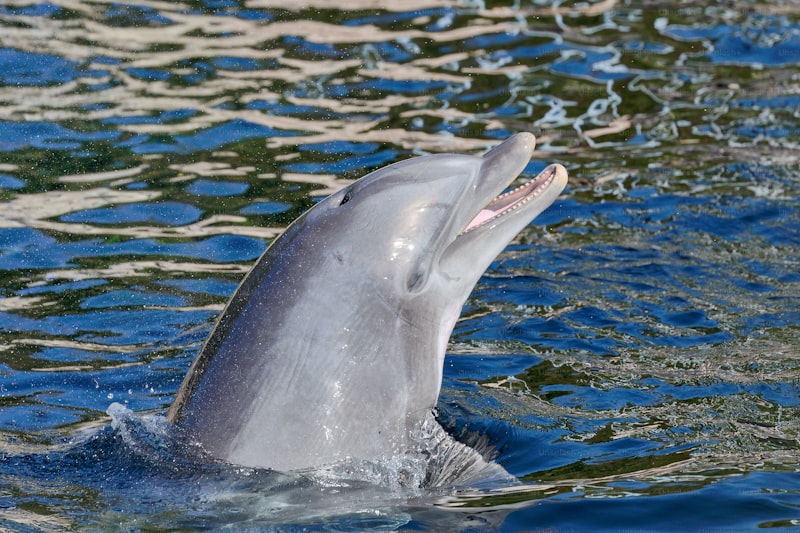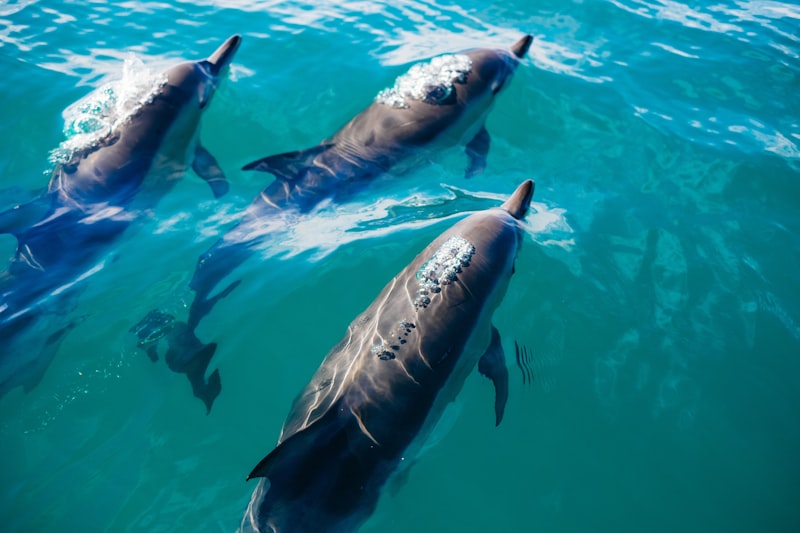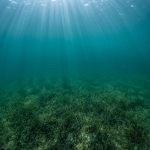One of the major issues confronting dolphin conservation is habitat loss and degradation. Dolphins rely on healthy marine environments for food and shelter, but pollution, coastal development, and climate change have all taken a toll on their habitats. As waters become polluted with plastics and chemicals, and coastal areas are transformed for human use, dolphins find themselves with fewer safe spaces to thrive.
Another pressing issue is accidental capture in fishing gear, known as bycatch. Dolphins often become entangled in nets meant for other species, leading to injury and death. This problem is particularly acute in areas where fisheries overlap with dolphin habitats. Finding solutions to reduce bycatch involves developing and implementing dolphin-friendly fishing practices and gear modifications to minimize unintended harm.
Climate change exacerbates these challenges by altering ocean temperatures and currents, affecting dolphin prey availability and migration patterns. As seas warm and habitats shift, dolphins must adapt or relocate, putting additional stress on already vulnerable populations.
So, what can be done to ensure the survival of these charismatic marine mammals? Conservation efforts must focus on a combination of stricter regulations, habitat protection, and community involvement. Establishing marine protected areas and enforcing sustainable fishing practices are crucial steps towards safeguarding dolphin habitats. Public awareness and education also play vital roles in fostering appreciation for dolphins and promoting responsible behaviors that reduce human impact on their environments.
While the challenges facing dolphin conservation are daunting, concerted efforts can make a difference. By addressing issues like habitat loss, bycatch, and climate change through collaborative action and innovative solutions, we can secure a brighter future where dolphins continue to inspire awe and wonder in our oceans.
Saving Our Oceans: Innovations in Dolphin Conservation
One pioneering approach involves the use of advanced drones equipped with high-resolution cameras. These aerial marvels allow researchers to monitor dolphin populations without disturbing their natural behaviors. By capturing detailed images and data from above, scientists gain valuable insights into migration patterns, group dynamics, and even individual health assessments. This non-invasive method revolutionizes our understanding of dolphin habitats and behaviors.
Additionally, acoustic monitoring systems play a crucial role in safeguarding dolphins. These underwater listening devices, known as hydrophones, detect and record dolphin vocalizations and other marine sounds. By analyzing these acoustic signatures, researchers can track dolphin movements in real-time and assess their responses to environmental changes. This technology not only aids in conservation efforts but also enhances our ability to mitigate human-induced threats.
Furthermore, collaborative initiatives between conservation organizations, governments, and local communities are pivotal in protecting dolphin habitats. By establishing marine protected areas and implementing sustainable fishing practices, stakeholders work together to ensure a safe haven for dolphins and other marine species. Education and awareness campaigns also play a vital role in fostering public support and promoting responsible stewardship of our oceans.
As we navigate the complexities of modern conservation, innovations in dolphin protection offer a beacon of hope. Through cutting-edge technologies, strategic partnerships, and community engagement, we can safeguard these enchanting creatures for future generations to admire and cherish. Together, we have the power to make a profound difference in saving our oceans and preserving the natural wonders they hold.
The Silent Struggle: Threats Facing Dolphin Populations
One of the foremost dangers confronting dolphin populations is habitat loss and degradation. As coastal development expands and human presence in marine environments grows, dolphins find their natural habitats shrinking. Pollution further compounds this issue, with chemicals, plastics, and other debris contaminating the waters dolphins call home. These pollutants not only degrade water quality but also pose direct threats to dolphin health, leading to diseases and reproductive complications.
Another critical threat is accidental capture in fishing gear, known as bycatch. Dolphins, often unintentionally ensnared in nets intended for other catches, suffer injuries or drown due to entanglement. Bycatch remains a significant concern globally, impacting various dolphin species and undermining conservation efforts.
Climate change amplifies these challenges. Rising sea temperatures and altered ocean currents disrupt prey availability, forcing dolphins to adapt or face starvation. Additionally, extreme weather events linked to climate change, such as hurricanes and storms, can devastate dolphin populations by directly impacting their habitats and food sources.
Illegal hunting and poaching also persist as threats in certain regions despite international protections. Dolphins, sought after for their meat, oil, or traditional medicinal purposes, fall victim to these illegal practices, pushing already vulnerable populations closer to extinction.
In response to these threats, conservation efforts aim to mitigate human impacts on dolphin populations. Initiatives focus on habitat protection, reducing pollution, promoting sustainable fishing practices, and raising awareness about the importance of marine conservation. Collaborative research and monitoring programs help track dolphin populations and identify critical habitats, informing conservation strategies worldwide.

Despite these efforts, the challenges facing dolphin populations remain urgent. Continued dedication to conservation, alongside global cooperation and public awareness, offers hope for safeguarding these iconic marine species for future generations.
Breaking Barriers: Global Efforts to Protect Dolphin Habitats
Dolphins, beloved for their intelligence and playful nature, face growing threats to their natural habitats worldwide. As human activities expand, from coastal development to industrial fishing, these marine mammals find themselves increasingly vulnerable. However, global efforts are underway to protect and preserve dolphin habitats, aiming to break barriers that threaten their existence.

One of the key challenges in safeguarding dolphin habitats lies in addressing the impacts of human encroachment. Coastal urbanization and industrial activities often disrupt the delicate balance of marine ecosystems where dolphins reside. Pollution from industries and coastal runoff further degrade water quality, affecting the health of these charismatic creatures.
In response, international conservation initiatives have intensified, focusing on creating marine protected areas (MPAs) and establishing sustainable fishing practices. These efforts aim not only to conserve dolphin habitats but also to promote biodiversity and ecosystem resilience. By designating MPAs, authorities aim to limit human interference and provide safe havens where dolphins can feed, breed, and thrive without disturbance.
Moreover, scientific research plays a crucial role in understanding dolphin behavior and habitat requirements. Researchers use advanced technologies such as satellite tracking and underwater acoustic monitoring to study dolphin movements and habitat use patterns. This data informs conservation strategies, helping policymakers make informed decisions to mitigate threats and protect critical dolphin habitats effectively.
Community engagement and education also form vital pillars of global conservation efforts. Local communities living near dolphin habitats are encouraged to participate in conservation activities, raising awareness about the importance of preserving marine ecosystems. Education programs in schools and public outreach campaigns further empower individuals to take action in safeguarding dolphin habitats for future generations.
While dolphins face significant challenges from human activities, global efforts are making strides to protect their habitats. Through marine protected areas, scientific research, and community engagement, stakeholders are breaking barriers to ensure these intelligent marine mammals continue to grace our oceans for years to come.
A Beacon of Hope: Success Stories in Dolphin Rescue and Rehabilitation
Imagine a world where injured, stranded, or distressed dolphins find a second chance at life, thanks to dedicated teams of experts and volunteers. These teams work tirelessly, like modern-day heroes, to rescue dolphins from perilous situations. Whether entangled in fishing nets, stranded on beaches, or suffering from injuries caused by human activities, every dolphin rescue is a testament to human compassion and commitment to marine life.
Once rescued, the journey towards rehabilitation begins. It’s not just about providing medical care; it’s about creating a safe environment where dolphins can heal physically and mentally. Rehabilitation centers become temporary homes where dolphins receive expert care tailored to their specific needs. From veterinary treatment to specialized diets and physical therapy, every aspect of their recovery is meticulously planned and executed.
But rehabilitation is more than just physical healing; it’s about restoring a dolphin’s natural instincts and behaviors. Imagine a dolphin, once frail and wounded, gradually rediscovering the joy of swimming freely and hunting for fish. Each milestone in their rehabilitation is celebrated – from the first successful dive to the moment they join a pod of fellow dolphins in a specially designed sea pen.
These success stories are not just about individual dolphins; they’re about conservation impact. Each rehabilitated dolphin contributes to scientific research and conservation efforts, offering insights into marine health and ecosystem dynamics. They become ambassadors for their species, inspiring communities to take action towards ocean conservation and sustainability.
In essence, the journey of dolphin rescue and rehabilitation is a narrative of hope, resilience, and the profound connection between humans and marine life. It reminds us that through dedication and compassion, we can make a difference – one dolphin at a time.
Frequently Asked Questions
What are the main threats to dolphin populations worldwide?
Learn about the main threats to dolphin populations worldwide, including habitat loss, pollution, bycatch in fishing nets, climate change impacts, and noise pollution. These factors endanger dolphins globally, necessitating conservation efforts to protect their habitats and mitigate human-induced threats.
What are the key conservation efforts aimed at protecting dolphins?
Learn about key conservation efforts focused on protecting dolphins, including habitat preservation, reducing pollution, implementing fishing regulations, and promoting public awareness. These efforts aim to safeguard dolphin populations and their ecosystems.
How does human activity impact dolphin habitats and populations?
Learn how human activities affect dolphin habitats and populations. Discover the direct and indirect impacts such as habitat destruction, pollution, and disturbance. Understand the importance of conservation efforts to protect these marine mammals.
How can individuals contribute to dolphin conservation efforts?
Learn how individuals can support dolphin conservation through actions like reducing plastic waste, supporting sustainable seafood practices, participating in beach clean-ups, advocating for marine protected areas, and supporting organizations focused on dolphin research and conservation.
What are the challenges in implementing effective policies for dolphin protection?
Learn about the challenges faced in implementing effective policies for dolphin protection, including issues with international cooperation, enforcement difficulties, and balancing conservation with economic interests.


